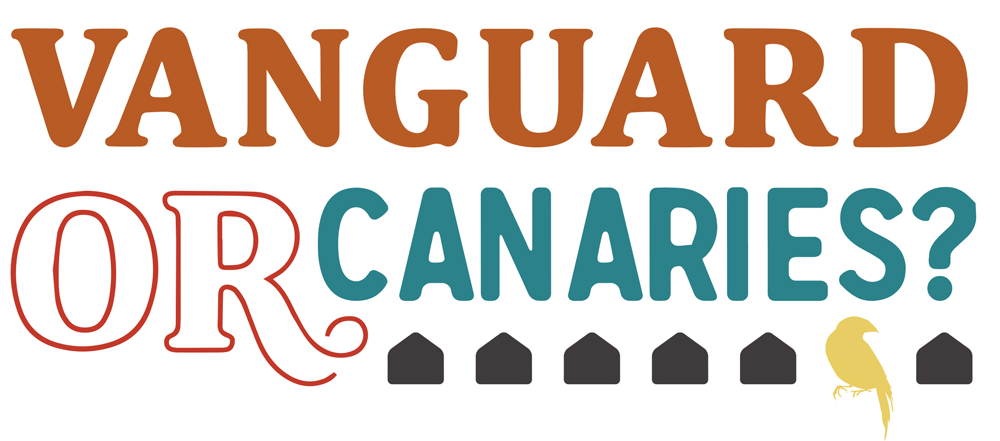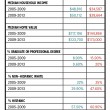The relationship between the queer community and gentrification can be slippery to define, in part because the latter term is sometimes used loosely. But conventional wisdom assumes a causal relationship: “While GLBTQ people in general are participants in gentrification, gay men in particular are often at the vanguard of gentrifying neighborhoods,” writes sociologist Mikaila Mariel Lemonik Arthur on the website glbtq.com. “This is because they tend to have a higher percentage of disposable income and often want to live in urban centers that are tolerant and culturally vibrant.”
 But what does the data say about queer residential patterns in the Alamo City? We looked at data from the most recent American Community Survey, which includes numbers from 2009-13. The U.S. Census Bureau, which administers the ACS, records same-sex households, both male-male and female-female. (Sorry, trans- readers, the federal government isn’t there yet.)
But what does the data say about queer residential patterns in the Alamo City? We looked at data from the most recent American Community Survey, which includes numbers from 2009-13. The U.S. Census Bureau, which administers the ACS, records same-sex households, both male-male and female-female. (Sorry, trans- readers, the federal government isn’t there yet.)
We examined unmarried* same-sex households at the census tract level, which are smaller entities that better reflect the communities that form neighborhoods than the more commonly used Zip codes. Containing roughly 4,000 inhabitants, they’re designed to be relatively homogeneous when it comes to economic status, living conditions, and other population characteristics.
In Bexar County, there were slightly more than 600,000 total households as of 2013, both straight and non, married and unmarried. Of those, 1,256 households were gay men in domestic partnerships and 1,748 were lesbian homes. Gays and lesbians have distinct residential patterns in this city.
For each sex we sorted census tracts by the number and percentage of same-sex households. We then selected the top 20 tracts from each list and identified those in the urban core or roughly within a five-mile radius. Only three downtown census tracts made the top 10 in both count and proportion, so we expanded it out in a few different ways first. In the extended range we settled on, the top tracts contained about 1.4 percent or more gay or lesbian households. We ended up with five urban tracts for gay men and three for lesbians. It bears emphasizing that numerous suburban zones across the metropolitan area are important in both number and proportion. But these were our inner-city gayborhoods: Mahncke Park, Tobin Hill, Denver Heights, Keystone/Deco District, and Beacon Hill for the men; part of the West Side, Beacon Hill, and Five Points for the women.
Last year, Dr. Christine Drennon, a geographer and urban-studies professor at Trinity University, conducted census-tract-level research into gentrification for the years 2002-07 period. The real-estate crisis of 2008 narrowed her research window, since real-estate data provide key metrics, along with variables such as income, education levels, and age. Census tracts are only available for five-year periods due to their small size, and not enough time had elapsed post-crisis for her to conduct research on more current trends.
Even though her team identified 35 census tracts within Loop 410 that experienced significant real-estate price surges during that period, Drennon cautions that property values do not tell the whole story. “School districts in San Antonio are so fragmented and there are so many, and they impact real estate tremendously, it makes studying price fluctuations difficult,” Drennon said. Once other demographic factors were considered, just five tracts showed significant variation from the city mean: north of the Quarry, Beacon Hill/Alta Vista, Tobin Hill, Southtown and south of Southtown. Of those, two coincided with our gayborhoods: Tobin Hill and Beacon Hill. (The coincidence is not exact, since census tract boundaries have changed somewhat.)
In our 2009-2013 window, census tract 1902 ranked 11th in the sheer number of gay male households and 16th in terms of proportion. Part of Tobin Hill, the tract covers roughly the area from Mulberry Avenue down to Dewey Place, between San Pedro Avenue and the San Antonio River. The N. Main Avenue strip is within the adjacent lower tract 1108; but despite its popular bars and restaurants, it is not high on the list of gayborhoods. The second tract, 1905.04, part of Beacon Hill, showed up on both our gay and lesbian maps. The tract stretches from Hildebrand down to Woodlawn between I-10 and Blanco Rd.
Considering that same-sex male and female households make up 0.2 percent and 0.3 percent of total Bexar County households, respectively, the relatively high percentages of homes in these two tracts of gentrification are notable. But are they part of a queer gentrification vanguard?
We looked back at same-sex households for the 2004-09 period, the best available matching data for Drennon’s research. In fact, none of the tracts she identified were high on any of our lists, with the exception of 1207.02, the area north of the Quarry, which was 20th for lesbian households in terms of count and 19th in terms of proportion. Not only did it barely make the grade, but it’s not part of the urban zone. So it would appear that gays and lesbians moved into the vast majority of these areas only after gentrification was already underway.
*The big disclaimer
Although our same-sex partnerships are identified as unmarried in official data, many of them have either wed in other states or declare themselves married despite the absence of some legal imprimatur. Last year, the U.S. Census Bureau announced it would begin counting same-sex married partners separately for the first time, and that data saw the light of day with the 2013 report. (Since our data contains five-year multiyear surveys from 2009-13, we couldn’t take advantage of this change.) Previously, if a same-sex couple declared as married, the bureau would automatically change its status to unmarried. If that seems unfair, it is. But it was worse before the 2000 Census. If a same-sex couple reported being married in 1990, the bureau actually changed the sex of one of the spouses. Some census-watchers say that the Supreme Court’s ruling in United States v. Windsor paved the way for the official change.
Aside from lumping together married and unmarried same-sex couples into the unmarried category, our approach has other limitations. First and foremost, we are only able to track “out” gays and lesbians, and age, socioeconomic status, race, ethnicity, and other factors influence the frequency of outness.
Also, the Census does not inquire about sexual orientation, only about the relationships of household residents to the householder, so it does not necessarily capture bisexual households. Moreover, it only captures domestic partnerships, not single gays and lesbians or couples living apart, individuals living in dorms or with parents, shared roommate housing, or other, unconventional arrangements. In addition, there have been measurement issues due to differing interpretations of partnering or unions that have led to changes in the questionnaire and downward revisions in recent years.
Finally, gay and lesbian couples are not geographically representative of the gay and lesbian population overall. Families have different housing preferences than single people and different neighborhoods offer varying housing stock–houses versus studio lofts, for example–that sort residents into different areas of the city differently.
Nevertheless, in the absence of expensive and detailed surveys, these census household reports are regularly used by sociologists and demographers as proxies for estimating LGBTQ presence. Going forward, the breakout of married same-sex households in the reports will add detail. For example, in the first year of reporting, we learned that even though Texas does not recognized same-sex marriages, a full 29 percent of same-sex households reported themselves as spouses.
Jeffrey Wright is a graduate student in the UTSA Applied Demography Program.
Jeffrey created a map showing the distribution of SA’s LGBTQ population based on a 2012 Community Survey by the PRIDE Center San Antonio. View it here.
Look at more of the date Jeffrey used here.
Read about the new Gallup survey and LGBT populations in major American cities here.




